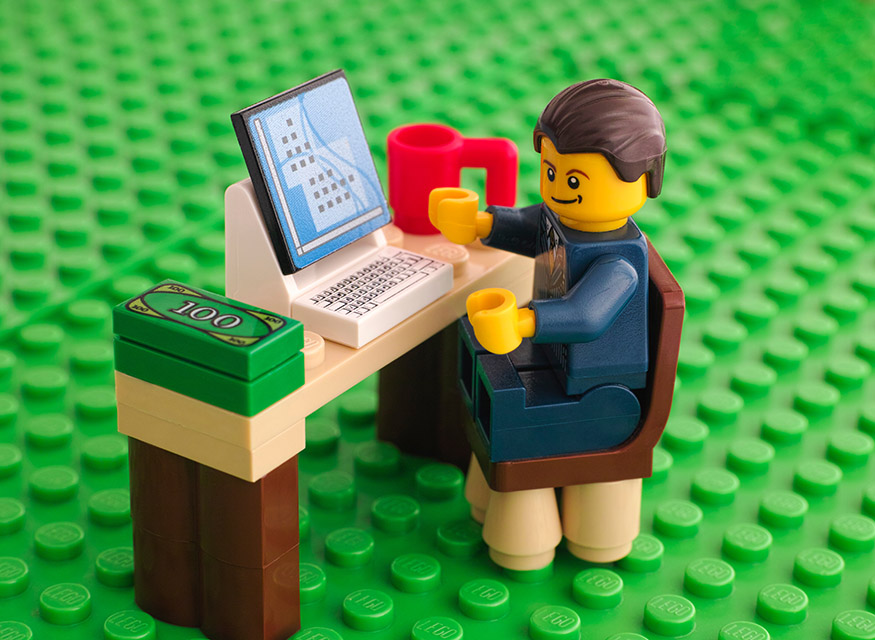Can play-at-work be a retention tool in 2022? Even before the pandemic, stress was prevalent and, for many, employee engagement was in the dumps. Then we were all sent home to fend for ourselves. Some of us are still there. What has that done to our creativity? Team cohesion? Mental health and burnout?
One indicator: U.S. workers are more dissatisfied with their jobs than they have ever been. According to a survey conducted by CivicScience, only 68% of U.S. adults are happy in their current jobs, which is a 16% decrease from this time last year. As Time reports, “the pandemic has masked a deep unhappiness that a startling number of Americans have with the workplace.” The article goes on to question whether work-from-home and hybrid work has limited “those serendipitous office interactions that lead to promotions and breakthrough ideas.”
Now that employees and teams are beginning to come together again, can the ship be turned around? A niche group of team facilitators believes it can. What’s their secret? It involves a pile of LEGO® bricks and some serious play-at-work. LEGO® SERIOUS PLAY® has been around since 1996 when a couple of Swiss professors put their heads together with LEGO leadership to explore alternative strategic planning tools and systems centered around…playing with LEGO bricks. But this idea—and other play-and-work strategies—are taking on new life as we move past the pandemic.
The LEGO® SERIOUS PLAY® Method is a facilitated meeting, communication and problem-solving process in which participants are led through a series of questions, probing deeper and deeper into the subject. Each participant builds his or her own 3D LEGO® model in response to the facilitator’s questions using specially selected LEGO® elements. These 3D models serve as a basis for group discussion, knowledge sharing, problem solving and decision making.
Sounds like a fun icebreaker for teams being reintroduced into the office, right?
“It is, but it’s so much more than that. Particularly right now,” explains Chris Bailey, Bailey WorkPlay executive director and a LEGO SERIOUS PLAY facilitator. “We’ve been interacting with screens and text for two years now. As we return to an in-person or hybrid environment, you need to find out what your team needs from this new work arrangement. What have they been holding back because it’s either too delicate or doesn’t feel safe to talk about in an email or Zoom meeting?”
Bailey has focused on play-at-work consulting for years but found new inspiration in LEGO SERIOUS PLAY and its potential for team building, strategic planning, and employee engagement. Part of the magic of these activities, he says, is the democratization of the process. Everyone gets an equal voice. How often has that happened over the past two years?
“There are two very fundamental components to these exercises,” he says. First, everyone starts with the same resources. The CEO doesn’t get fancier or more LEGO bricks. Second, everyone shares. A regular meeting falls victim to a twisted 80/20 rule, right? Maybe 20% of the people talk, and 80% of the people just kind of sit around and hope the meeting is done as quickly as humanly possible. But with this, everyone has equal input and engagement.”
The use of play makes these interactions more comfortable for all involved, Bailey continues.
“You build something, and then you’re able to hold it out in front of you. And you can say, ‘Well, this is how I feel about that project.’ And you’re pointing not back at you, and you’re not pointing at somebody else (particularly a boss or some other person on your team). You’re talking to an object. So, psychologically, there’s a safe distancing. Others can ask, ‘Well, what do you mean? Can you tell me more about how that makes you feel?’ Suddenly you’re able to talk about things that are not easily talked about.”
A recent study showed that LEGO SERIOUS PLAY enhanced cohesion, collaboration, and even psychological safety for work teams during the pandemic. But LEGO bricks aren’t the only play-at-work tool to achieve these goals. Bailey is designing a workshop right now that incorporates both LEGO SERIOUS PLAY to identify team dynamics and then an escape room to put those dynamics to the test.
“It’s fun. It’s not work for the individuals involved. But it’s so much more beneficial than simply hanging out or whiteboarding in a meeting. You’re going to go deep into what makes your team tick, and then you have something valuable to take away and build on.”
What other strategies do you have in place to bring teams back together on a positive note? Share them with us or, if you need help developing a strong back-to-work game plan, let us know. We’re happy to help.




